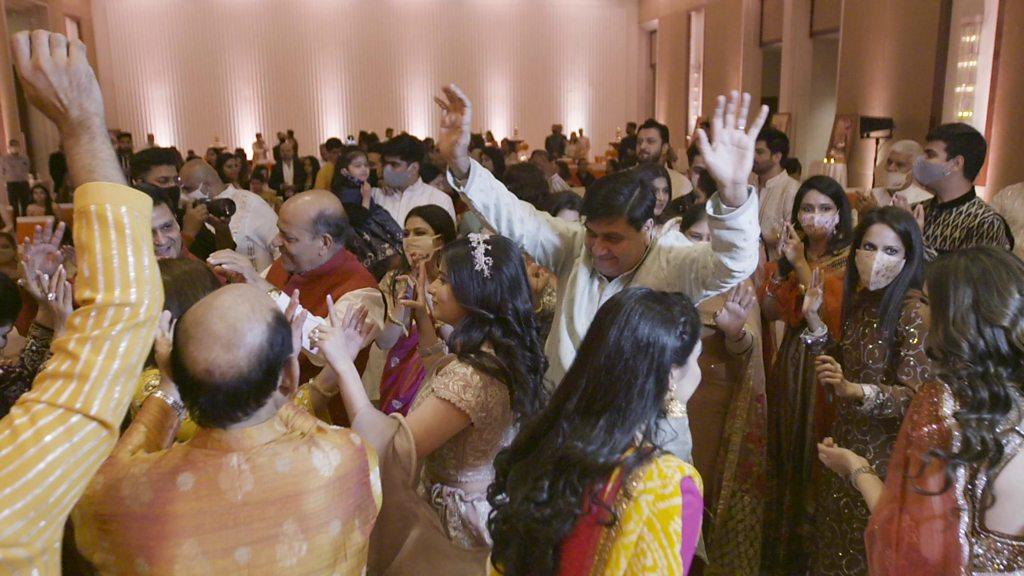Dussehra 2022: Celebrations take over India's streets
- Published
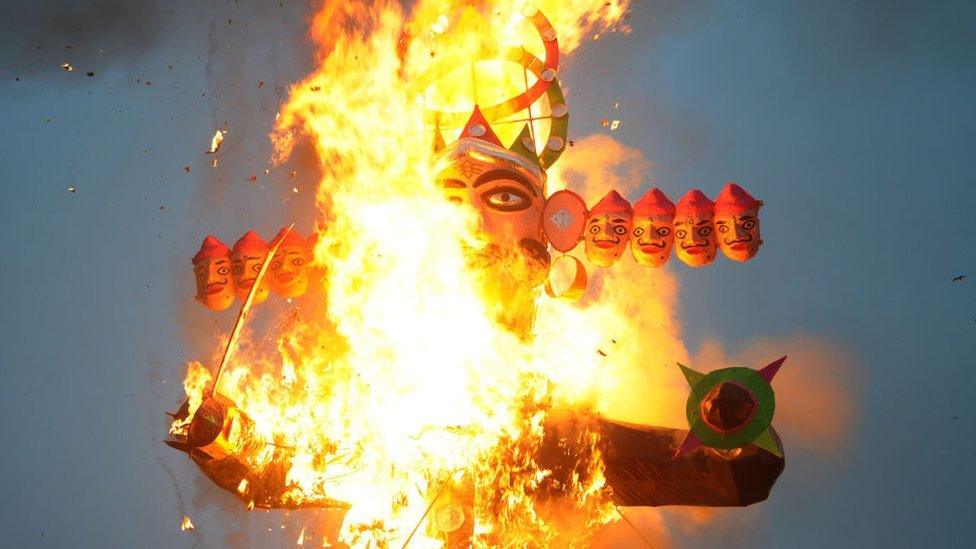
The festival of Dussehra celebrates the victory of good over evil
Millions of Indians are celebrating Dussehra - an important Hindu festival - as fears about the Covid-19 pandemic have subsided.
For the past two years, celebrations were either muted or altogether cancelled.
Dussehra is celebrated on the 10th day of the seventh month of the lunar calendar, which roughly falls between the months of September and October.
The festival celebrates Hindu god Ram's vanquishing of the 10-headed demon king Ravan, and symbolises the triumph of good over evil.
Dussehra is celebrated throughout India with different rituals and activities.
Celebrations last for many days and are marked by songs, dances and large processions.
People visit family and friends, exchange sweets and gifts, and wear traditional outfits.
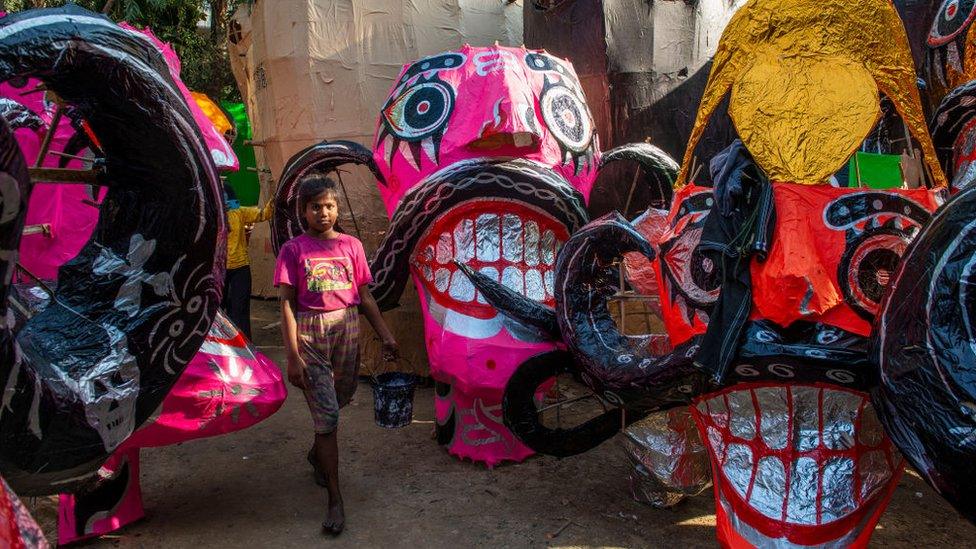
Thousands of Ravan effigies are burnt during Dussehra
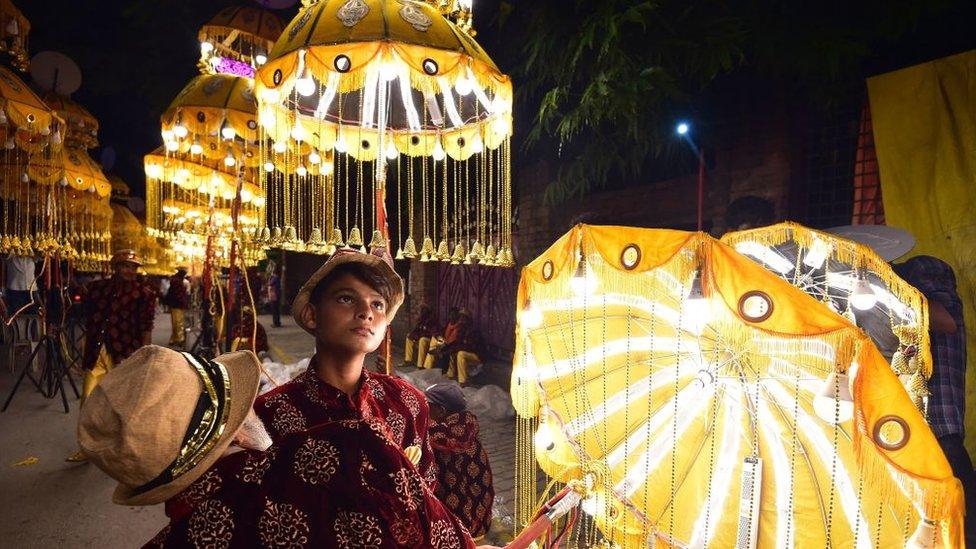
In several regions, colourful processions are held to mark the festival
In some places such as Gujarat, the festival is preceded by nine nights of dancing - or Navratri - where people wear colourful clothes and perform traditional dances with small sticks - dandiyas - and synchronised claps.
On the 10th day, effigies of Ravan, his brother and son are burnt to mark the victory of good over evil. Large crowds gather to watch this spectacle and erupt into cheers as crackling flames engulf the effigies.
Sometimes, firecrackers are lit in tandem, but over the past couple of years, environmentalists and politicians have been urging people to refrain from lighting fireworks due to the rising levels of air pollution.
In northern India, Ramlila - a theatrical performance based on Ram's life - is performed in cities and towns. Performers dress up as different characters from the Hindu epic Ramayan and enact scenes in front of large crowds.
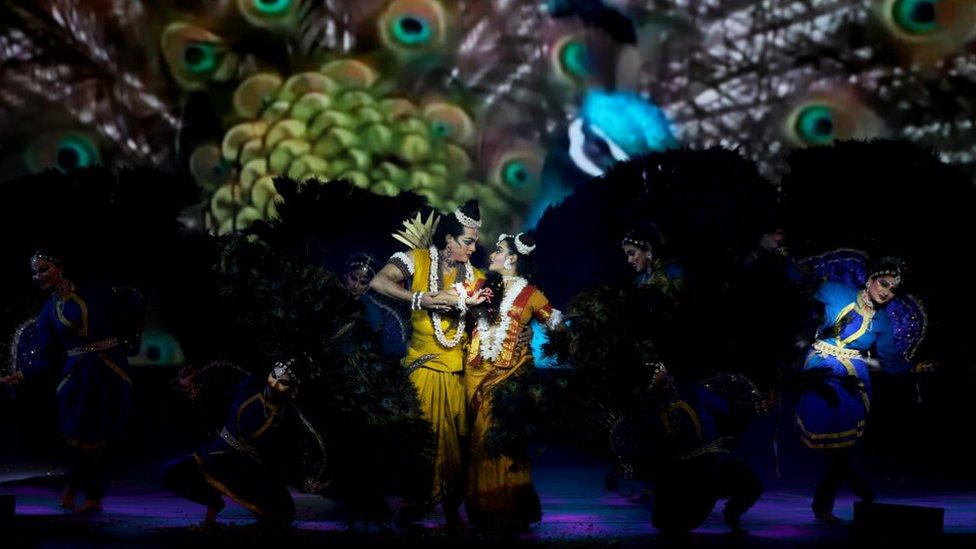
Ramlila performances often have elaborate props and special effects
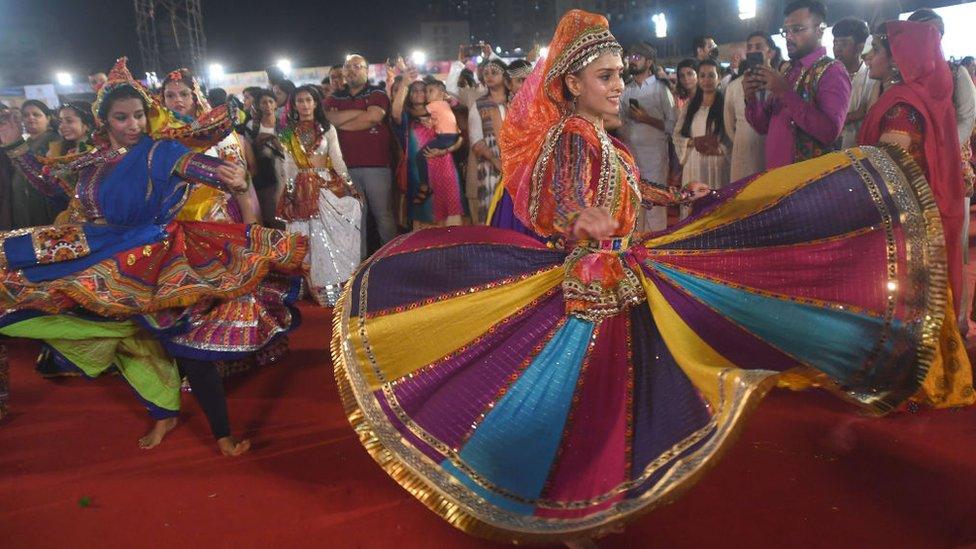
Thousands of people participate in the Navratri dance festival
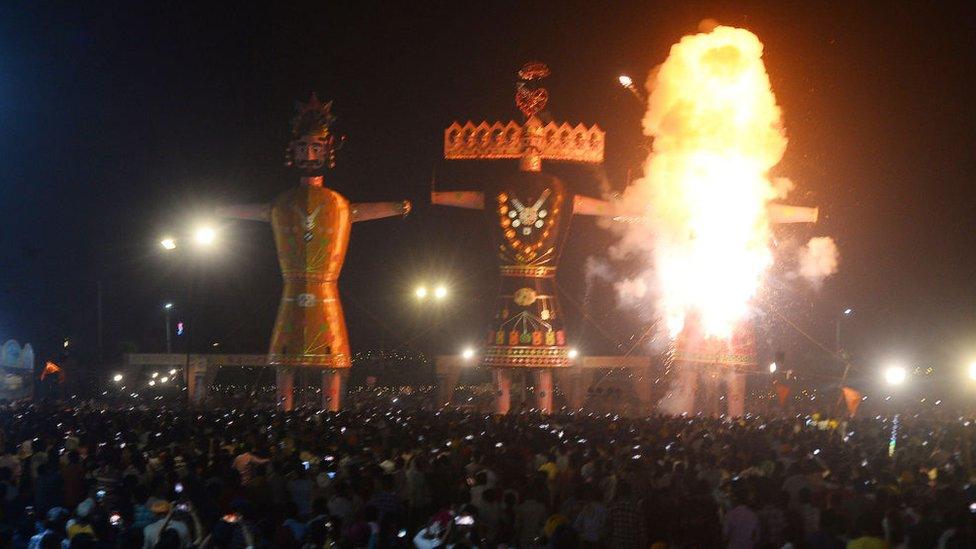
Huge crowds gather to watch the burning of Ravan's effigies
The festival also marks the end of Durga Puja and commemorates goddess Durga's slaying of the buffalo demon Mahishasur.
People set up elaborate stage decorations known as "pandals" that draw large crowds. These pandals showcase designs based on a variety of themes, ranging from politics to important paintings.
Dussehra also marks the beginning of preparations for Diwali - a festival of lights - which is held 20 days later.
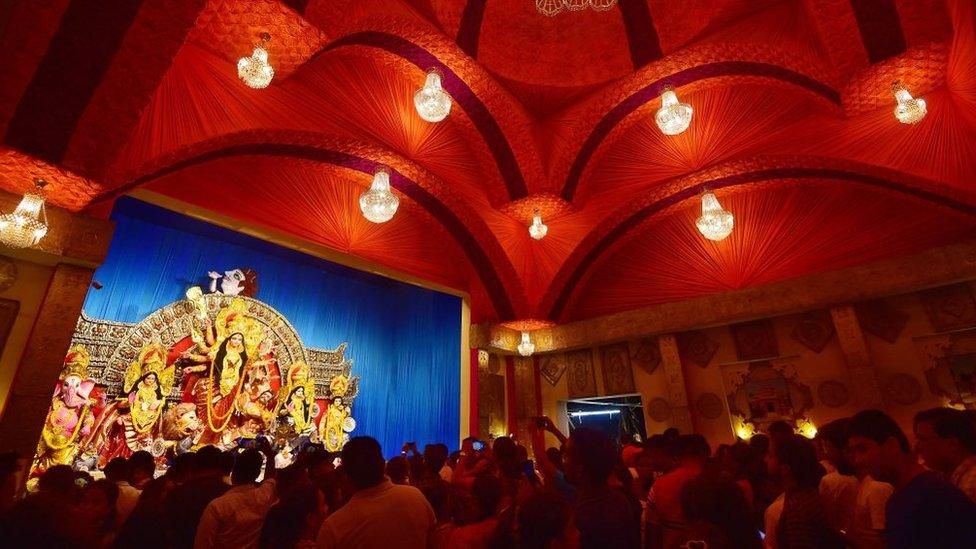
Durga Puja pandals feature mesmerising decorations
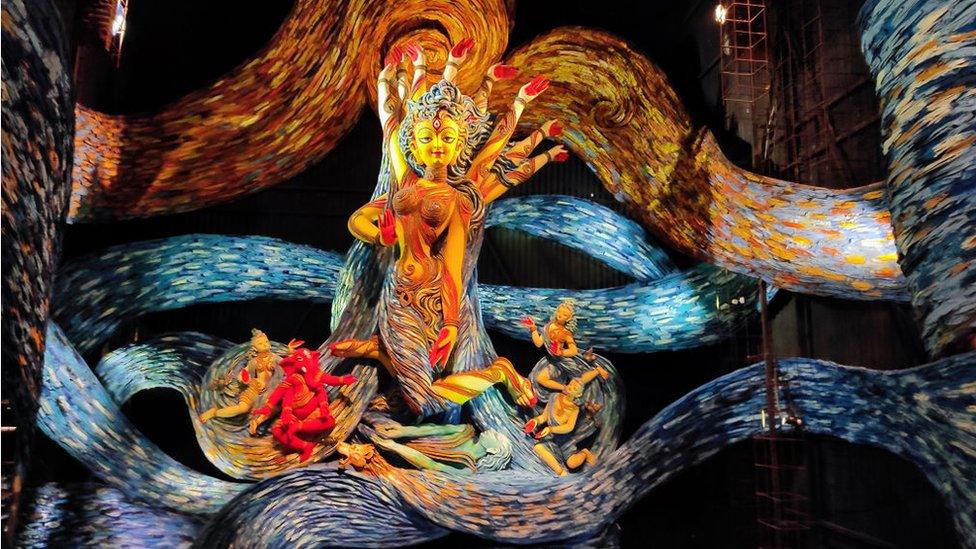
At the end of the festival, idols of goddess Durga are immersed in water bodies
All images subject to copyright
- Published18 March 2022
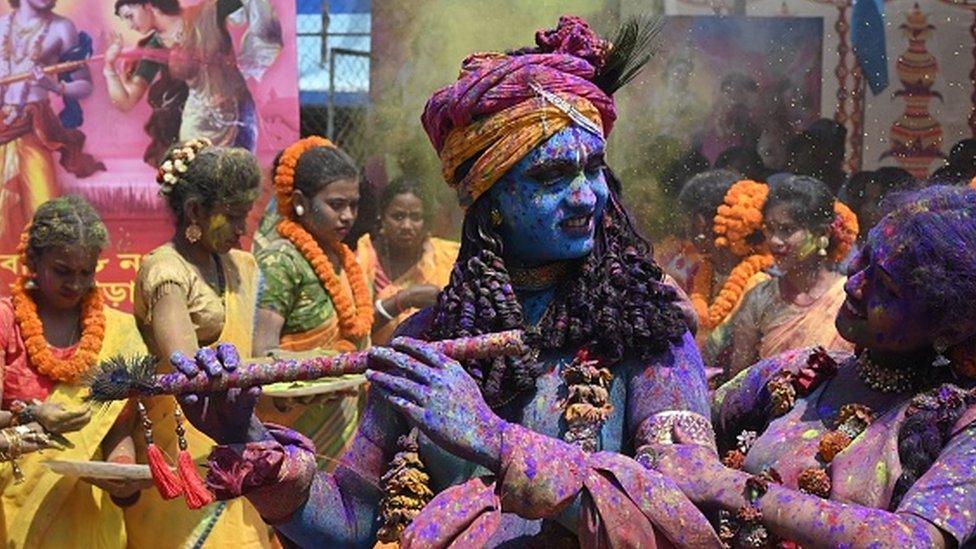
- Published25 October 2020
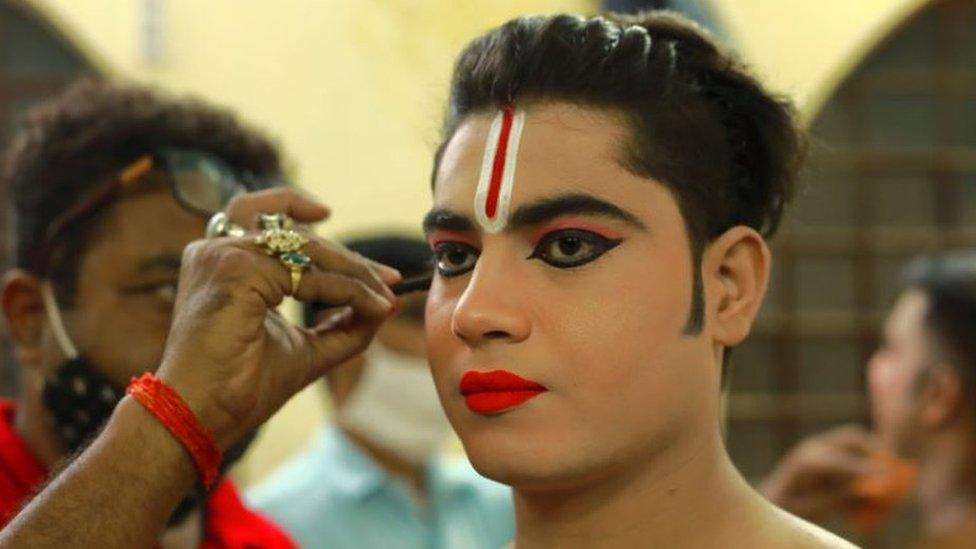
- Published14 November 2020
